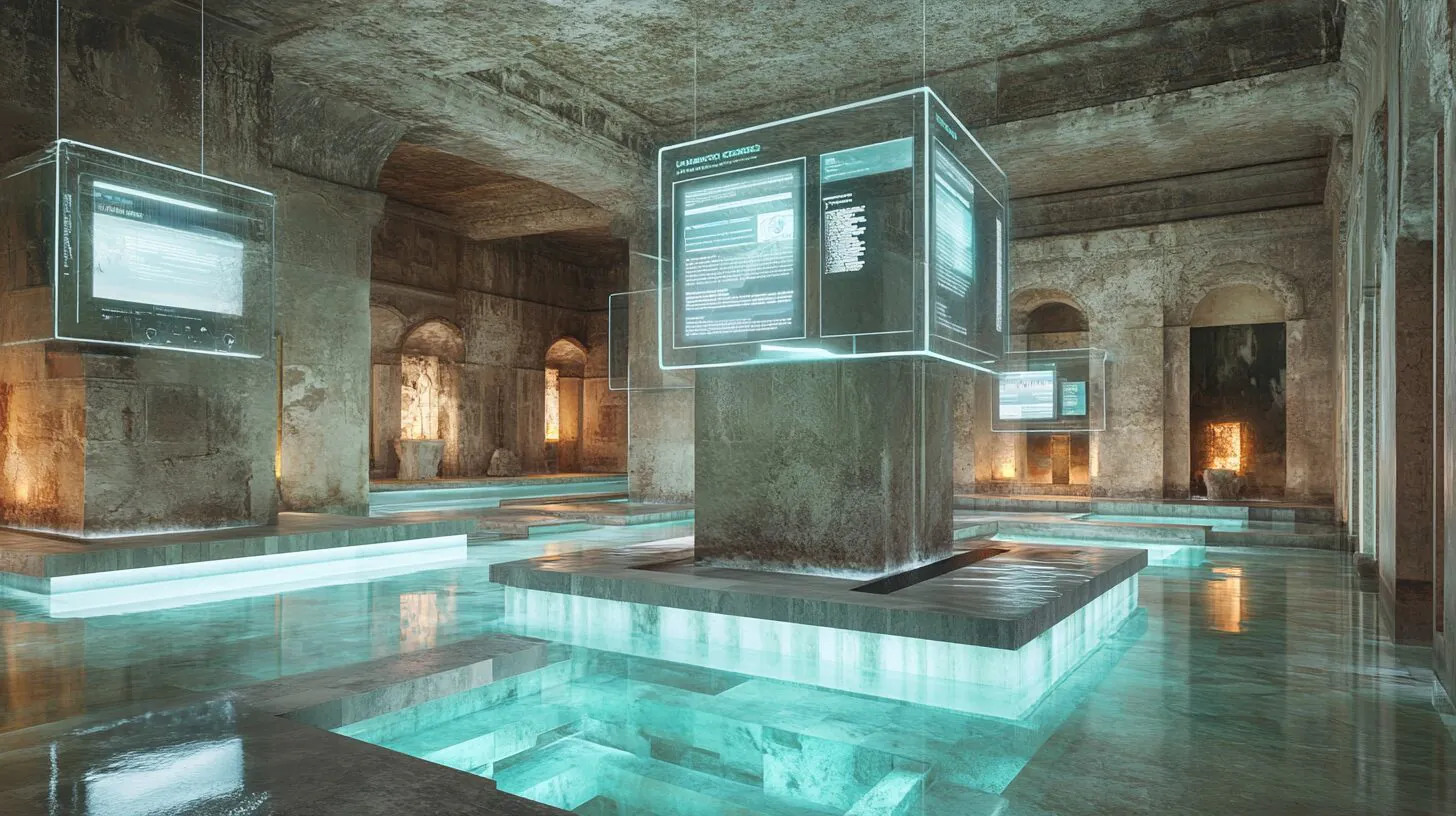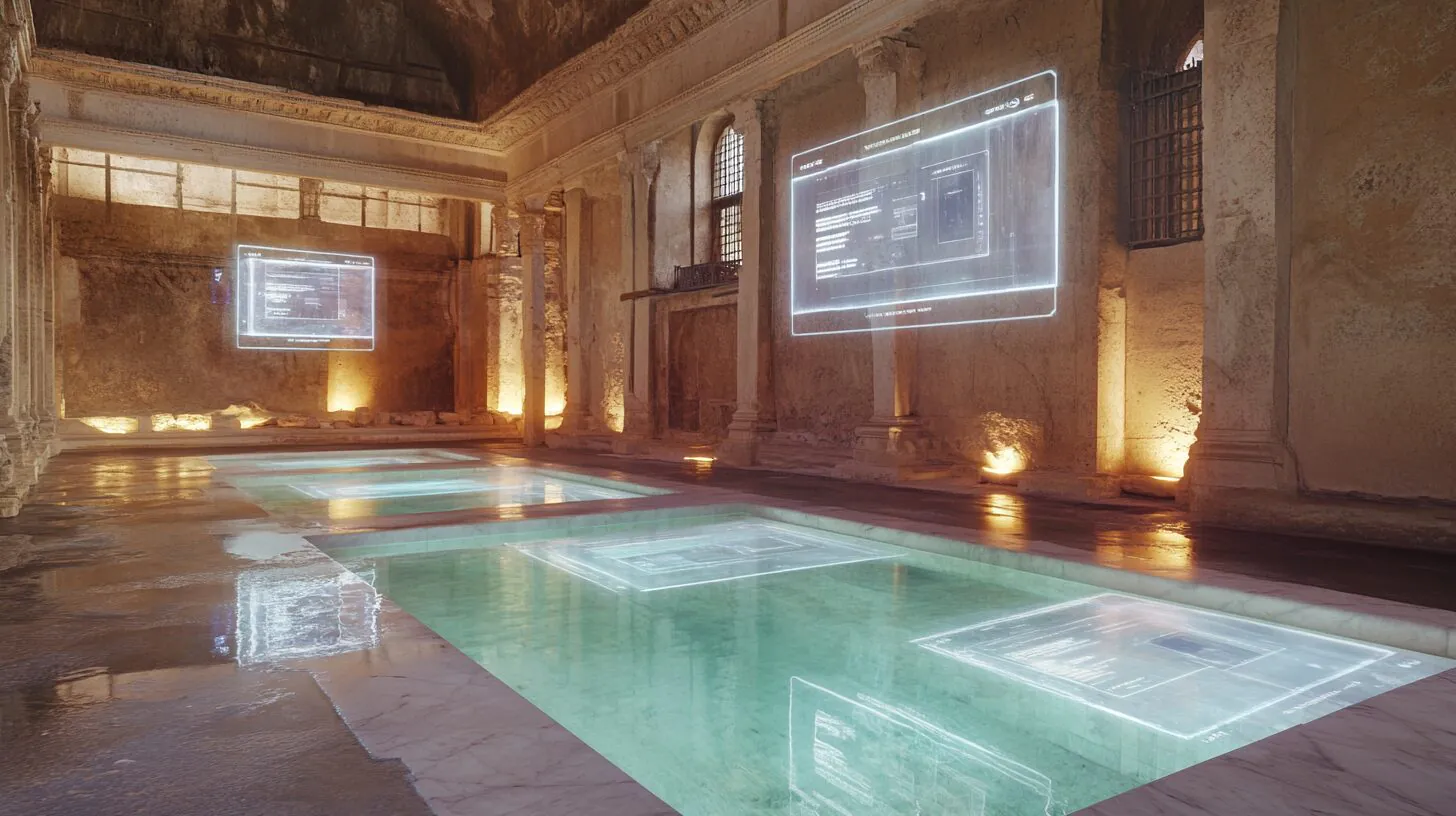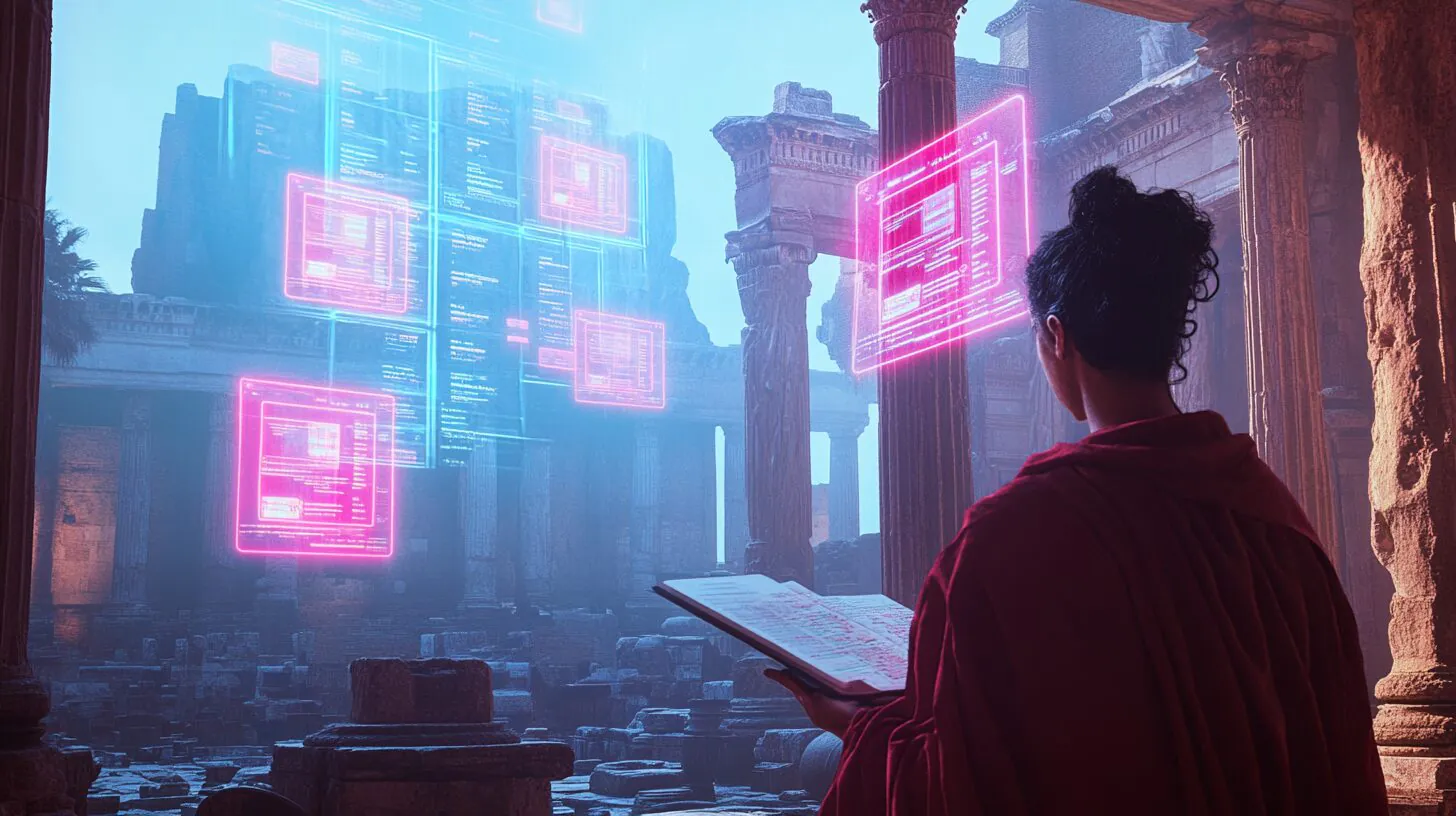Date of publication:
01 Oct. 25SPA sites and SEO: how to ensure visibility in search
Have you ever wondered why your luxury spa website, like a Ferrari among old Zaporozhets, isn’t ranking high in Google results? You invest money, time, and effort, but traffic trickles in. “It must be some kind of SEO magic I don’t understand,” you might say. And you’d be partly right.
SEO for SPA websites is like trying to run a marathon blindfolded. Yes, your site is fast, stylish, and modern. But if search engines can’t “see” your content, then you’re invisible to Google. According to Ahrefs, over 90% of content on the internet receives no search traffic at all. You don’t want to be part of that statistic, do you?
This article is your compass in the world of SEO for SPAs. We’ll show you how to overcome technical obstacles, optimize your site for search, and attract customers already searching for your product. No fluff, no platitudes—just real-world case studies, advice, and numbers. Because in business, as in life, visibility is everything.
What are SPA sites and how do they work?
Imagine landing on a website with lightning speed. No delays, page refreshes instantly. It seems like this site is your perfect business tool. That’s what a SPA – Single Page Application – is. But, like a Ferrari, an SPA requires serious maintenance to truly dominate search engine results.
A SPA is a web application that operates on a single-page principle. All data is loaded at once, and then only the necessary parts of the page are updated. Why is this great? Because it’s fast, intuitive, and lag-free. For example, Facebook and Gmail are built on this model, and we can’t imagine them any other way.
But SPA isn’t just about user experience. It’s also a technical challenge for businesses. How do you get your site seen by search engines? This is where the chess game begins: Google, JavaScript, and your SEO specialist all sit down at the same board.

What users love about SPAs
The top criteria are:
- Speed : SPAs load instantly, like turbo mode in a racing game.
- Interactivity : user actions are not interrupted by page reloads.
- Aesthetics : Spas have a modern and stylish look that will impress your clients.
Those who don’t like search engines
Here are just a couple of points to pay attention to and avoid mistakes:
- JavaScript instead of HTML . For search engines, an SPA is almost a blank page.
- Hash URL . A link with a # in the address is a dead end for SEO.
- Dynamic content . Google prefers clear text, not code that needs to be digested.
We’ll look in more detail below at what search engines don’t like, as well as how to solve these problems.
SPA vs. MPA: Why the Difference Matters
Multi-page websites (MPAs) operate on the old, trusted model: each page is separate and loads each time you navigate to another page. SPAs break this paradigm by making everything on a single page.
SPA:
- Faster to use.
- Convenient for interactive services (online stores, CRM, chatbots).
IPA:
- Easier to index by search engines.
- Ideal for content projects such as blogs or news sites.
To understand which is best for your business, check out our detailed comparison of SPAs and MPAs.

Key SEO Challenges for SPA Websites and Effective Optimization Methods
When it comes to SEO for SPAs, it’s like inviting search engines to a party where they don’t know where to go. Sure, you have a stylish design and fast loading speed that makes your competitors envious, but to Google, your site is like a locked door without a sign.
JavaScript is a friend of users, but not search engines.
Imagine Googlebot visiting your website. It sees only a blank page with JavaScript code and shrugs. In an SPA, most of the content is generated on the fly, meaning dynamically. This is great for humans, but a real curse for search engine robots.
For example, eBay encountered this problem while testing a SPA structure for its pages. Their organic traffic plummeted, and only switching to hybrid rendering (SSR + CSR) allowed them to regain their rankings.
Interesting fact: According to Google Developers, even with modern JavaScript processing technologies, search engines need up to a week to digest complex code.
Solution:
- Server-side rendering (SSR) allows you to generate pages on the server and send the finished HTML to the bot. It’s like giving a search engine a menu instead of making it guess what your restaurant serves.
- Pre-rendering is a simple and accessible way to create static versions of pages for bots. Tools like Prerender.io solve this problem in a few clicks.

Hashed URLs: A Shortcut to Oblivion
SPAs love hashes in their URLs. It looks cool and works for users, but not for search engines. For example, site.com/#/about might not be considered in search results at all, since Google ignores everything after the hash.
A real-life example: Zalando . Their transition to a hashed URL SPA nearly cost them a third of their organic traffic. They quickly learned their lesson: they switched to clean URLs and saw a 25% increase in traffic.
Solution:
- Clean URLs: Replace hashes with clear URLs like site.com/about . This looks professional and helps SEO.
- Sitemap: An XML sitemap will act as a navigation tool for search engines. It will help them find all the important pages, even if they’re hidden.
Dynamic content and meta tags – invisible friends
Imagine your website is like a magazine, but the pages are always blank until you open them. This is exactly what an SPA looks like to search engines. Without static meta tags, titles, and descriptions, your content remains invisible.
Example: HubSpot realized their dynamic content wasn’t getting enough traffic. They started adding static elements—meta tags, titles, and descriptions. This allowed them to increase visibility by 35% in just three months .
Solution:
- Static meta tags. Use React Helmet or similar tools to create static titles and descriptions.
- Structured data. JSON-LD helps search engines understand what’s on your page.
Fact: Websites that use structured data get 20% more clicks in search results (according to Schema.org ).

Lack of internal links
Search engines are “tourists” who rely on links to navigate. In SPAs, these links are often hidden behind dynamic buttons that don’t work for robots. This can leave half your site completely unindexed.
So, you know the main challenges. But the best news is that all these problems can be solved.
Solution:
- Create logical navigation. Key pages should be accessible via simple text links.
- Use anchor text with keywords. This improves the relevance of links to search engines.
Slow first render
SPA loads all resources at once, which can take a long time. Users are impatient, and Google is even more so: slow sites lose both visitors and search rankings.
Solution:
- Lazy loading. Load only the elements needed for the first screen. Fetch the rest later.
- Minify JavaScript and CSS. Use Webpack tools to reduce file size.
Fact: According to Google Developers, every second of delay reduces conversions by 7%.

The Role of Analytics in Improving SPA Visibility
Have you ever tried to find treasure without a map? That’s exactly what SEO for SPA websites looks like without analytics. Analytics is your GPS, showing you where you’re losing customers and where the treasure trove of opportunities lies. So, if you want to not just survive in a competitive world but win, let’s “crack the code” of using analytics effectively together.
Why Analytics is Key to SEO
Your website is a puzzle for search engines. Analytics helps you understand how Google “sees” your site, which pages perform best, and where you need to make changes. Be sure to check out the SEO checklist for new websites – it includes everything you need to optimize your site for search engines.
Example: Spotify uses analytics to track how users interact with dynamic content. When they noticed that certain pages were experiencing high bounce rates, they reduced load times and added more static elements. The result? A 20% increase in conversions!
Which analytics tools should you choose?
There are many tools available on the market, but choose those that help you get real insights, not just a ton of data:
- Google Analytics 4 (GA4): Ideal for tracking dynamic conversions in SPAs.
- Google Search Console: Your Best Friend for Monitoring Indexing and CTR.
- Hotjar: Shows where users click and where they don’t look at all.
Fact: According to HubSpot research , companies that actively use analytics tools are 30% more likely to achieve their SEO goals.

What exactly to measure
When your car is your SPA, analytics are the sensors that display speed, fuel level, and tire pressure. Here are the metrics you should regularly check:
- Indexed Pages: Make sure all important sections of your site are visible to Google.
- CTR (Click-Through Rate): How engaging are your titles and meta descriptions?
- Bounce rate: If it is high, the content may not meet expectations.
- Average dwell time: The more time people spend on your site, the more likely Google is to find it useful.
Example: eBay uses specialized reports in GA4 to track transitions between SPA pages. This allowed them to optimize the most popular sections, resulting in a 15% increase in conversions.
SEO Optimization Tools for SPA Websites
If your SPA website is your business, SEO optimization tools are the team of professionals that ensure its success. From proper setup to detailed analysis, they help make your site visible to Google. Let’s look at proven tools and real-world case studies that demonstrate how these solutions work.
Google Search Console: How to Find Your Weaknesses
Google Search Console is a basic tool for any website, but it’s an absolute must-have for SPAs. It helps you understand whether a page is indexed or whether user search queries match dynamically loaded content, and optimize search visibility.
Twitter case : After implementing a mobile SPA, the company noticed that content wasn’t being indexed properly. Using Google Search Console, they identified routing issues and fixed them, preserving traffic.

Lighthouse: Evaluate Your Website’s Performance
Lighthouse by Google is your personal speed, accessibility, and SEO consultant. It analyzes how quickly your website loads and which aspects need optimization. In addition to speed, Lighthouse evaluates mobile usability, accessibility, compliance with modern web development standards, and SEO impact. You receive reports with clear recommendations on how to improve performance and make your site more user- and search-engine-friendly. This is an indispensable tool for anyone striving to provide the perfect user experience.
Screaming Frog: Find Hidden Problems
This tool allows you to crawl your website like a search engine bot. When crawling your site, select the Old AJAX Crawling Scheme configuration in the Rendering tab under Configuration – Spider. Screaming Frog helps find broken links, duplicate pages, and other technical issues that may be hindering your SPA website.
PreRender.io : Static Content for Search Engines
PreRender.io creates a static HTML version of your pages, perfect for SPA websites. This allows search engines to quickly index your content.
Reddit case : After switching to SPA, the company faced difficulties indexing dynamic content. Using PreRender.io , they created static versions of their main pages, which increased their visibility in Google by 25%.
Ahrefs and SEMrush: Keyword and Competitor Analysis
These tools allow you to research which keywords your competitors are using and which ones will bring the most benefit to your SPA website. With competitor analysis features, you can see which queries drive more traffic to your competitors and evaluate their promotion strategies.
Ahrefs helps you find keywords that are failing and need optimization, or, conversely, those that could become your gold mine. SEMrush lets you determine which of your competitors’ pages rank highest and how they structure their content to achieve results.
Using these tools you can:
- Create a database of relevant keywords for your website.
- Assess the difficulty of promotion for specific queries.
- Find gaps in your competitors’ strategies and use them to strengthen your position.
Puppeteer: Automate Rendering Checks
This tool from Google allows you to see what your site looks like after JavaScript is executed and evaluate whether everything is accessible to search engines.
Instagram case : When updating the web version of the SPA, Instagram discovered through Puppeteer that some content was not displaying correctly for Google. Fixing the errors helped maintain their high rankings.
Each of these tools helps address the unique challenges of SPA websites. With them, your site will not only remain user-friendly but also become a favorite among search engines.

Cases of successful SEO optimization of SPA websites
Sometimes it feels like SEO for SPAs is like trying to complete a quest blindfolded. But as practice shows, even the most complex challenges can be overcome with the right tools and approaches. Here are real-life stories proving that SPAs can do more than just achieve search visibility but also become true SEO stars.
Airbnb: When Search Engines Finally “See” Content
When Airbnb adopted SPA architecture, the company experienced a sharp decline in organic traffic. Search engines simply couldn’t understand their dynamic content.
Solution:
- The Airbnb team integrated server-side rendering (SSR), which allowed them to create static versions of pages specifically for robots.
- We optimized dynamic meta tags to ensure each page has unique titles and descriptions.
Result: Organic traffic increased by 20%, and users began to find exactly the pages they needed.
Pinterest: Back in the Game with Pre-Rendering
Pinterest, like many other SPA sites, experienced indexing issues. Their content remained invisible to Google, and users simply couldn’t find the inspiration they needed.
Solution:
- We implemented pre-rendering using Prerender.io to prepare static versions of pages for search engines.
- Changed the URL structure, removing hashes (#) from links.
Result: the number of indexed pages increased by 30%, and search traffic by 25%.

Slack: Dynamic Documentation That Works
Slack uses SPAs for support and documentation pages. But they noticed that most of these pages simply weren’t showing up in Google search results.
Solution:
- We applied pre-rendering to key sections of the documentation so that search engines could “see” the content.
- We optimized internal links between pages, ensuring easy navigation for bots.
Result: Google visibility increased and support requests decreased by 15%.
Netflix: Masters of Structured Data
Netflix invested in SPA from the very beginning, but even such a powerful team faced the problem that dynamic content was ignored by search engines.
Solution:
- We’ve added JSON-LD for structured data to help Google understand what’s on the page.
- We’ve set up automatic generation of meta tags that are unique to each page.
Result: Netflix increased organic traffic by 15% and improved user experience by reducing content load times.
Asos: Internal Links That Led to Success
The Asos online store, like most SPA websites, experienced problems with search engine visibility. The main problem was the lack of a clear internal linking system.
Solution:
- The team created a logical hierarchy of internal links between categories and products.
- Added static navigation for the most important pages.
Result: Page indexing improved by 40%, and user time spent on the site increased by 25%.
These cases show that even the most complex SEO issues for SPA websites can be resolved. The key is adaptability, the right strategy, and a willingness to experiment.

Results: Time to take your SPA to the top
Let’s be honest: SEO for a SPA website is no walk in the park. But does a true entrepreneur shy away from challenges? On the contrary, challenges are an opportunity to stand out. If you’ve decided to choose a SPA for your business, it already speaks volumes about your progressive approach. This means all it takes is a little technical wizardry to make your site visible to search engines.
What we learned from this trip:
- Rendering is your trump card. If Google can’t see your content, your customers won’t find it either. Use SSR or prerendering to ensure your content is ready for indexing.
- Speed is everything. No one likes to wait, and Google is no exception. Reduce JavaScript size, optimize images, and implement caching.
- Logical structure is important. URLs should be as clear as road signs. Remember, clarity is the gold standard in SEO.
- Goal data is your identity. A unique title and description for each page will make your website more relevant.
A SPA is like a new sports car: fast, innovative, but requiring proper tuning. Yes, it’s extra work, but the end result will be impressive. Companies like Pinterest, Airbnb, and Netflix have already demonstrated how technical challenges can be turned into a competitive advantage.
If you have any questions or would like to discuss in more detail how to get your SPA website to the top of Google, please contact us! Sometimes, just a few smart decisions can open the door to entirely new opportunities.



